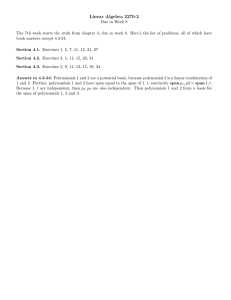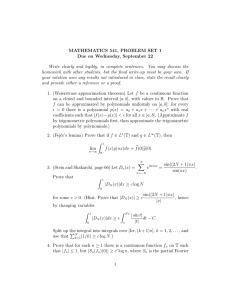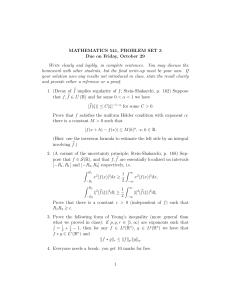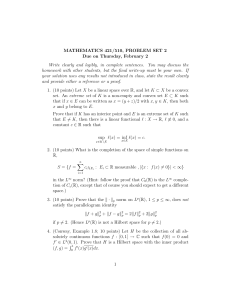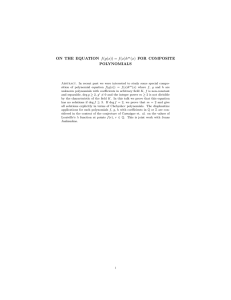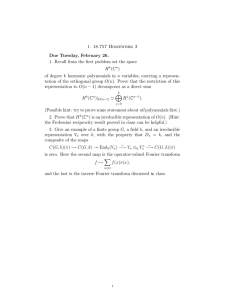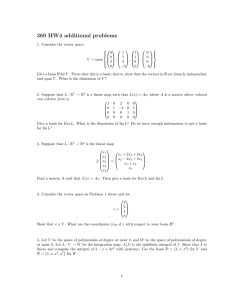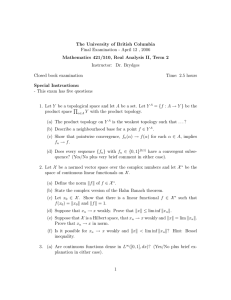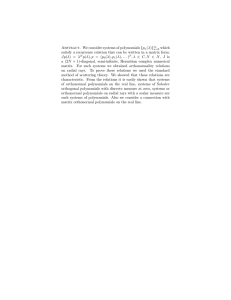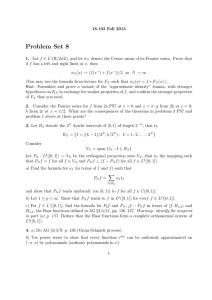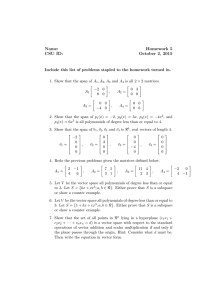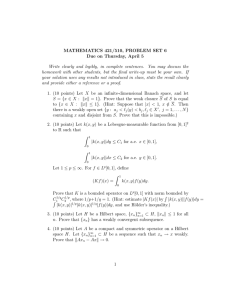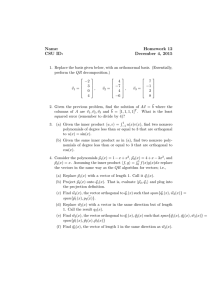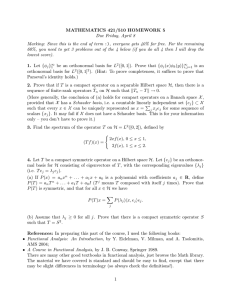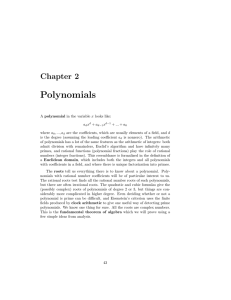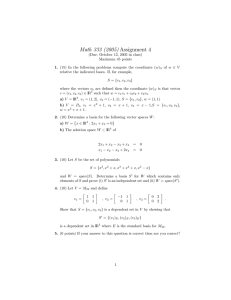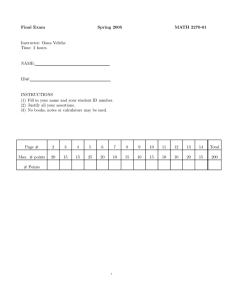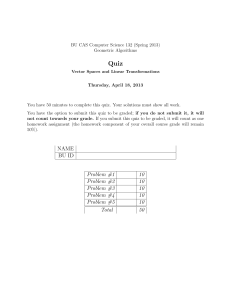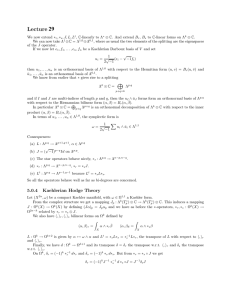MATHEMATICS 421/510, PROBLEM SET 3 Due on Thursday, February 16
advertisement
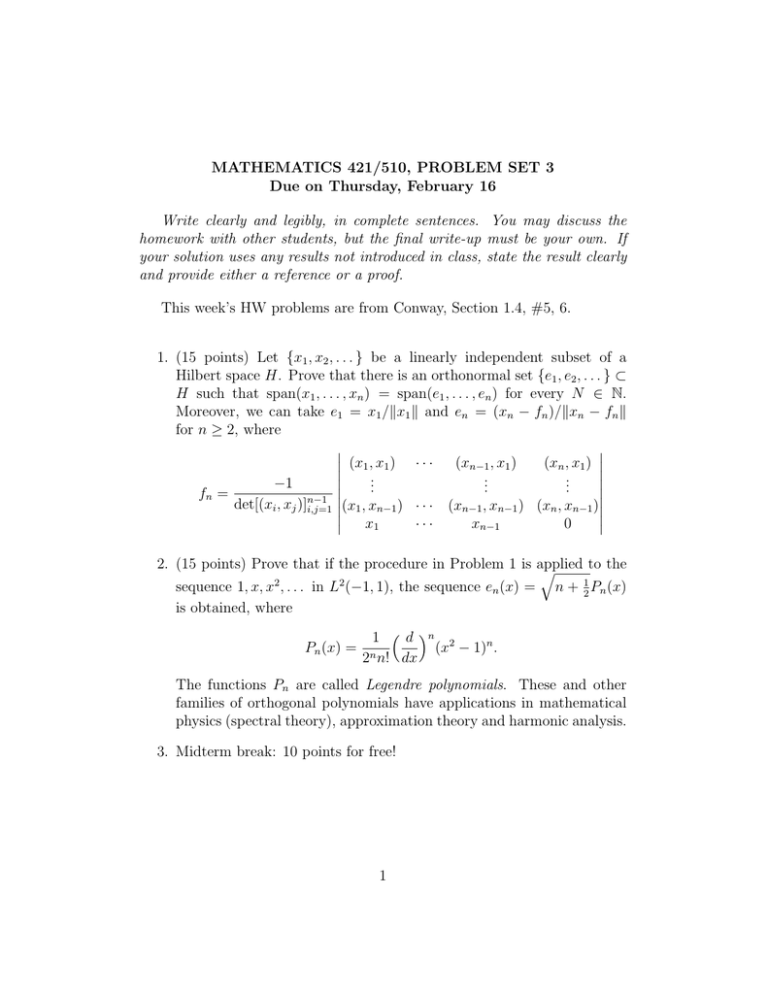
MATHEMATICS 421/510, PROBLEM SET 3
Due on Thursday, February 16
Write clearly and legibly, in complete sentences. You may discuss the
homework with other students, but the final write-up must be your own. If
your solution uses any results not introduced in class, state the result clearly
and provide either a reference or a proof.
This week’s HW problems are from Conway, Section 1.4, #5, 6.
1. (15 points) Let {x1 , x2 , . . . } be a linearly independent subset of a
Hilbert space H. Prove that there is an orthonormal set {e1 , e2 , . . . } ⊂
H such that span(x1 , . . . , xn ) = span(e1 , . . . , en ) for every N ∈ N.
Moreover, we can take e1 = x1 /kx1 k and en = (xn − fn )/kxn − fn k
for n ≥ 2, where
(x1 , x1 ) · · · (xn−1 , x1 )
(x
,
x
)
n
1
..
..
..
−1
.
.
.
fn =
n−1 det[(xi , xj )]i,j=1 (x1 , xn−1 ) · · · (xn−1 , xn−1 ) (xn , xn−1 )
x1
···
xn−1
0
2. (15 points) Prove that if the procedure in Problem 1 is applied
to the
q
1
2
2
sequence 1, x, x , . . . in L (−1, 1), the sequence en (x) = n + 2 Pn (x)
is obtained, where
1 d n 2
Pn (x) = n
(x − 1)n .
2 n! dx
The functions Pn are called Legendre polynomials. These and other
families of orthogonal polynomials have applications in mathematical
physics (spectral theory), approximation theory and harmonic analysis.
3. Midterm break: 10 points for free!
1
